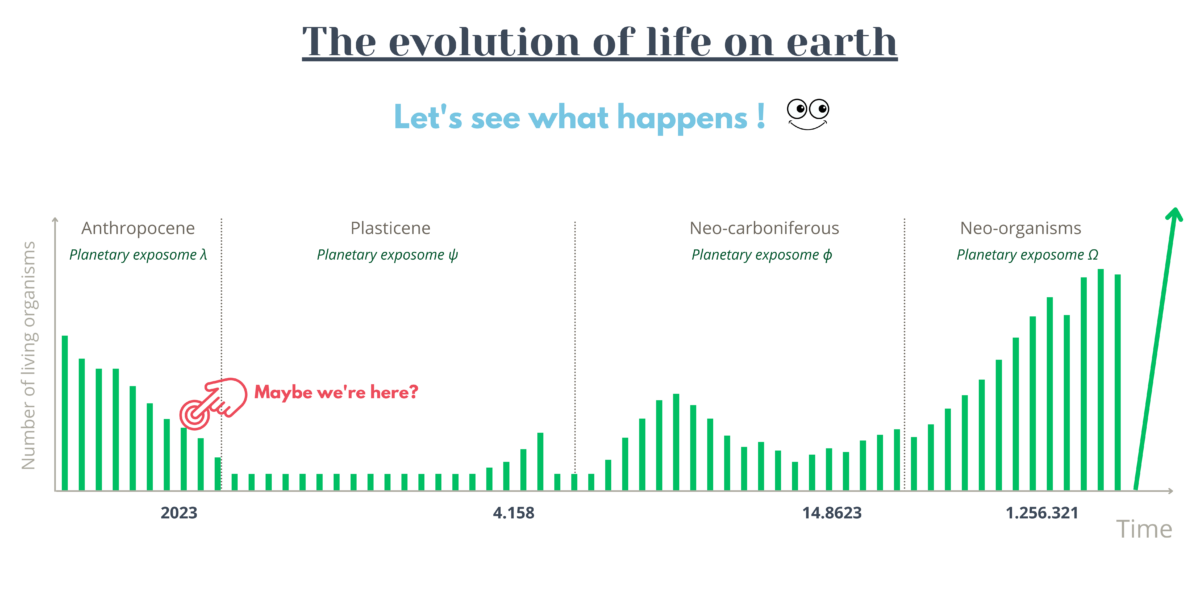Frédéric Naud
French Contemporary Sculptor
Human engineering is just a natural organic process.
Digital Art
Era : Plasticene
Animal : Terribilis Magna Corniger
Collaboration :
Vidéo : @naudfred
Audio : @vincentallix_
Tempus Evolutionis Vitae Post Hominum
Exposome, component of the engine of evolution, boundary between two ecosystems and eras of life.
Life connected to its environment.
Time as a transformative factor.
Artistically exploring the notion of the exposome means breaking down the concept through evolutionary time and the prism of the living world.

The concept of exposome is variable and needs to be redefined according to the time-individual prism studied.
Art and science are linked by a common unity, that of Long Time. Learning, discovering, preserving, transmitting. It is this notion of long time and long-term projection that will form the central axis of the work. Seeing things far ahead, looking to the future and putting ourselves back on a time scale where humanity is neither the beginning nor the end, but rather a stage from one exponent to another.
Following this residency, the proposed work will be an immersion in an evolving chronological frieze. Visitors are invited to travel from one exponent to another, at the heart of the transformation of living things engendered by the Anthropocene.
Repositioning the human as an evolutionary stage in life, rather than as a destructive end in itself.
To make tangible the notion of the History of Life, and to bring out in each visitor the 4 billion years of Living History that we all carry with us, while at the same time being the roots of the 4 billion years to come.
An immersion, a walk in a park where different evolutionary stages can be apprehended, listened to and understood as a succession of living organisms inviting the discovery of the next…
A stroll through an immersive, tangible scientific story. This artistic installation will invite visitors to use their knowledge of Darwinian evolution and reinterpret it in their own imaginary world, to imagine a future for living things that is certainly possible.


